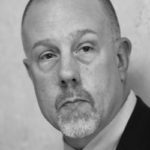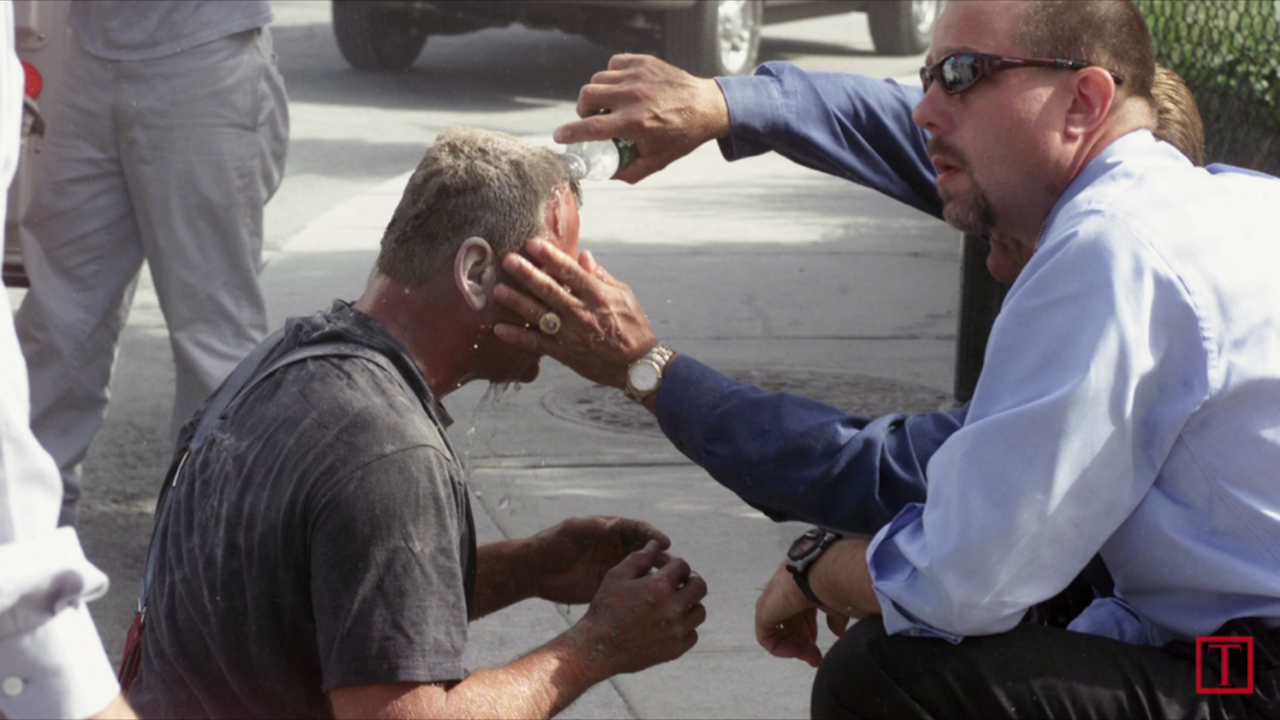September 12, 2016

Frank Straub, Ph.D.
Director of Strategic Studies, National Policing Institute

Frank Straub, Ph.D.
Director of Strategic Studies, National Policing Institute
On Saturday (September 10th), I received an email from Jim Bueermann, my boss at the National Policing Institute. The email’s subject line was succinct:
“Is that you in this photo from 9/11?”
I opened the email and clicked on the link Jim had provided; I watched the video, and there I was, kneeling next to a NYC fire fighter whom my partner and I had pulled out of the first tower of the World Trade Center after it collapsed. Amazingly, he had survived even though he had been in the lobby.
I had never seen the photo, and it brought back memories of 9/11, which Jim asked me to share.

I had driven by the World Trade Center, maybe an hour or so before the first plane hit on my way to the New York State Inspector General’s Office, which was about four blocks south of the Trade Center. After a little time in the office, I headed out to the New York City Police Department’s headquarters, where the following week I was to start my new job as the NYPD’s deputy commissioner of training.
The first plane slammed into the World Trade Center as I took the elevator down to the street. The vibrations shook the building. I got outside and could see one of the World Trade Center’s two towers was on fire. Initially, I thought that a small plane had accidentally crashed into it. However, based on the amount of damage, and the fact that I had worked on the investigation of the 1993 World Trade Center terrorist bombing, I was concerned that it was more than an accident.
I went back upstairs to my office and was in a conference room with some colleagues and watched the second plane slam into the other tower. Right then, we knew we were under attack. My partner and I decided to go and see if we could help. I was a trained EMT, and he was a retired NYPD detective.
We went out the back door of the building. The first thing I remember was seeing body parts of people all over the street. I looked up at the towers. Both of them were burning badly.
We headed toward the Trade Center. At one point, I remember seeing an airplane tire resting in an alleyway. As we were walking up, it was complete pandemonium. People were running away from the towers. Everybody was in complete shock. As we made our way to the Trade Center, we assisted some of the injured people and directed others to safety.
Shortly after arriving at the Trade Center, we ran into a NYFD captain and his team of firefighters who knew my partner. They were readying themselves to go into the towers. We exchanged “good luck” wishes and went our separate ways. We ran into Father Mychael Judge, the chaplain who told us to be careful because of the people jumping out of the buildings, the glass, and other debris falling from up above us. Father Judge died shortly thereafter.
When the first tower started to collapse, we ran toward the Hudson River and took cover behind a building. When the air cleared enough for us to see, we returned to the area where the tower had been. It was incomprehensible that the tower had collapsed. It was at this point that we saw the fire lieutenant struggling to climb out of the tower’s remnants. We grabbed him and got him away from the rubble. We found an EMS crew and got a stretcher. We then began assisting others who had been injured by the collapse.
We ended up at the second tower where we met members of NYPD’s Emergency Service Unit, some of whom I had provided counter-terrorism training to during my federal law enforcement career. They were suiting up to go into the tower. We discussed whether we should join them, but the consensus was we should stay and help injured people who were coming out of the remaining building. Ironically, the deciding factor was that they didn’t have enough helmets and breathing apparatuses for my partner and I.
The ESU team went into the second tower. Shortly thereafter, the tower started to collapse. We ran north from the plaza. You could feel the building coming down. I felt things hitting my back, but I just kept running. There was a fire engine in front of us. My colleague and I, along with a firefighter, dove underneath. Everything went completely black.
The force of the building collapsing lifted the engine off the ground. Fortunately, when it came down, the wheels held. I couldn’t see and could barely breathe. I just remember asking my partner if he was okay and hearing the fire fighter’s PASS alarm (personal alert safety system) going off.
Eventually the air cleared. We crawled out from under the engine. I couldn’t see very well because I had so much stuff in my eyes, I had scratched both of my corneas. Everything was on fire because of all the paper that had blown out of the buildings – it was like being in hell.
Fire and police vehicles burned. I remember the emergency service vehicles – they were full of ammunition, and some of that ammo was going off. We found a fire hose and washed off our eyes. My partner noticed that my back was covered with blood. I wasn’t hurt. Sadly, a person who had been running behind us didn’t make it to the fire apparatus and was killed by the collapsing building.
For a while, we didn’t know what to do. We just sat there among stunned fire fighters, police officers and civilians, all staring at where the towers once stood.
In the hours afterward, we helped as best as we could. I returned almost every day for the next couple of weeks to assist with the recovery. I also worked with families who had lost people, conducting critical incident debriefings with colleagues who were mental health professionals.
On October 1st, I was sworn in as the NYPD’s deputy commissioner of training and began working with the outstanding men and women assigned to the academy to develop counter-terrorism training for the NYPD’s approximately 50,000 employees.
People from all over the world came to help us. One day, an official from Israel arrived and explained he had been ordered to come and help us develop training. Another time, Germany sent a terrorism expert. By January, we had developed and trained almost all of NYPD’s sworn officers and civilian employees. Those counter-terrorism modules were also used to train police officers and fire fighters throughout the NYC metropolitan area.
The work we are doing at the National Policing Institute is critically important. We have to learn from 9/11, the San Bernardino terrorist attack, the Pulse Night Club attack, and other critical incidents. We have to share the lessons learned with the women and men who protect our communities to save lives, and hopefully prevent future attacks. If we don’t, the victims have lost their lives in vain.
The work is very personal and incredibly important. I feel lucky to be part of it.
A 30-year veteran of law enforcement, Dr. Straub currently serves as the Director of Strategic Studies for the National Policing Institute. He last served as the Chief of the Spokane, Washington, Police Department, where he received national recognition for the major reforms and community policing programs he implemented and significant crime reductions achieved during his tenure. Dr. Straub previously served as the Deputy Commissioner of Training for the New York City Police Department; and as a federal agent.
Disclaimer: The points of view or opinions expressed in this article are those of the author(s) and do not necessarily represent the official position of the National Policing Institute.
Written by

Frank Straub, Ph.D.
Director of Strategic Studies, National Policing Institute
Strategic Priority Area(s)
Topic Area(s)
For general inquiries, or to submit an essay for consideration, please contact us at info@policefoundation.org.
Share
Strategic Priority Area(s)
Topic Area(s)
For general inquiries, please contact us at info@policefoundation.org
If you are interested in submitting an essay for inclusion in our OnPolicing blog, please contact Erica Richardson.
Share
